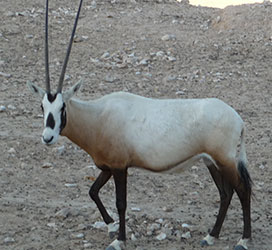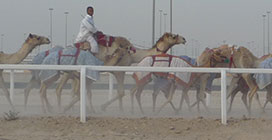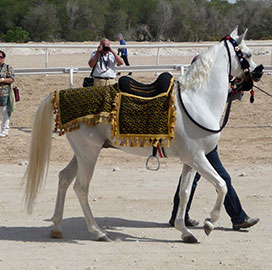Comparative animal genomics in Qatar

Baker Institute for Animal Health
235 Hungerford Hill Road
Ithaca, NY 14853
Phone: (607) 256-5633
Fax: (607) 256-5608
dfa1@cornell.edu
The goal of this project is to increase understanding of the human genome through a comparative study of the genomes of three species of importance in Qatar: the Arabian Horse, the Dromedary Camel, and the Arabian Oryx. Comparison of the genomes of various mammals has provided important insights into the function of the human genome, including information about genome evolution, mechanisms that control gene expression, and the purposes of genes with unknown function. New genomics technologies such as next-generation sequencing and high-throughput genotyping enable rapid characterization of the genomes of little-studied species.
The information and genomic tools developed by this project will enable investigation of genes that contribute to adaptation to desert life (e.g. heat loss, water conservation, and metabolism) as well as the function and polymorphism of important multi-gene families, such as the olfactory genes, and immune system genes such as the Major Histocompatibility Complex and immunoglobulin genes.
The genome sequences of these three species will contain crucial information for future genetic studies of desert mammals. Through this project we are likely to identify genomic regions that contain novel pathways for survival in an arid environment. Gene loci important for heat stress are already linked to critical issues in human health, including cardiovascular and renal disease. Current demands on arable land, trends in climate change and rapid loss of species diversity will rapidly force both wild and domestic populations to live in increasingly challenging environments. By better understanding the physiological mechanisms behind success in a hot and dry landscape we may identify useful tools for improving the health and wellbeing of both human and animal populations.





